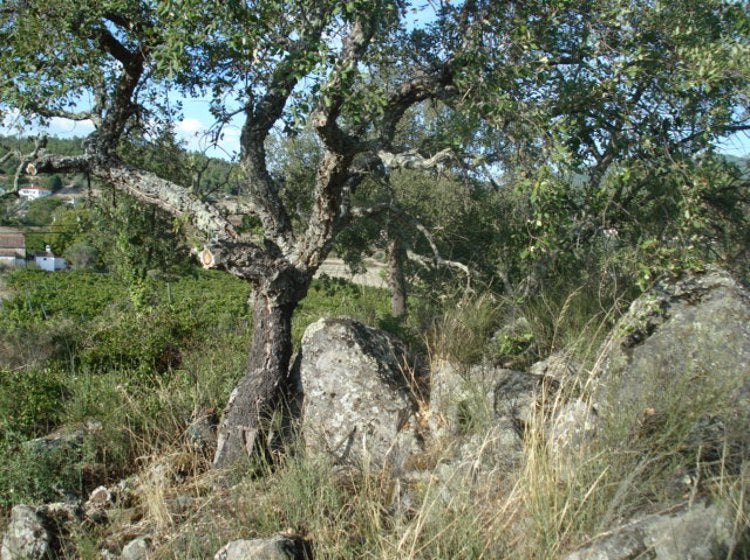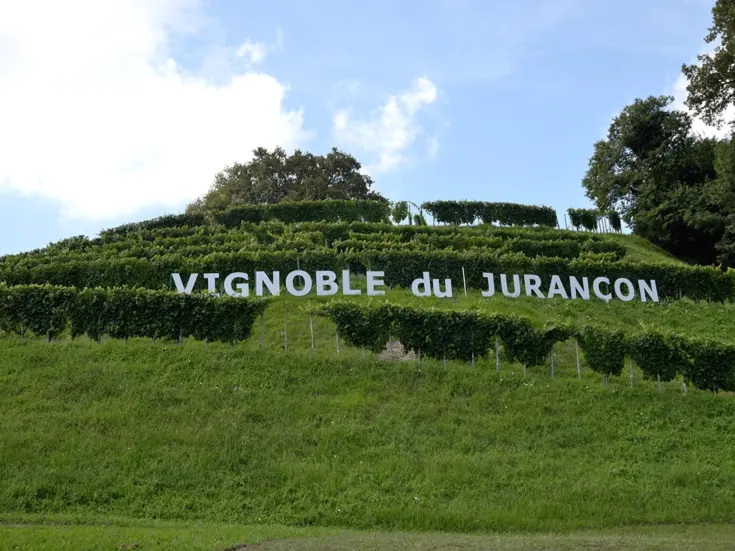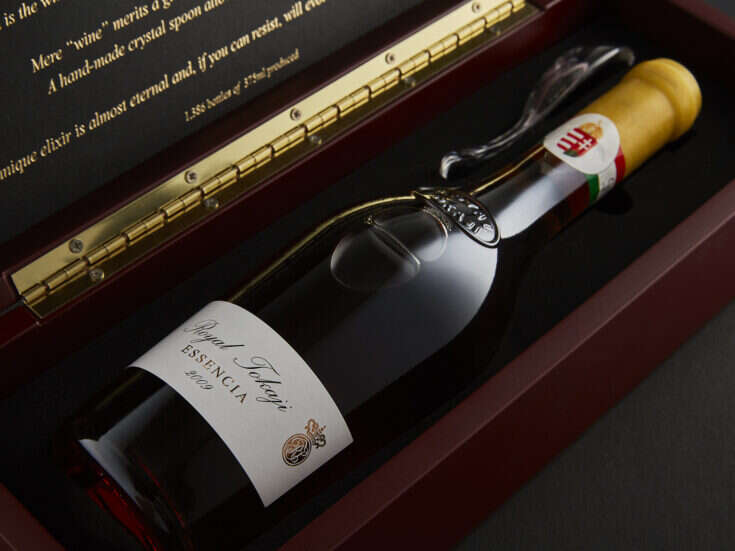
The lobby of the Hotel Tivoli is a cool, tranquil oasis amid the heated bustle of downtown Lisbon. In the early 1970s, I recall, a huge cage of crickets added to the calm with their constant tick-tick-ticking. It was here on September 3, 2004, that I met the owner of Quinta do Centro, the vineyard that I had my eyes on in Portalegre. I had managed to visit the property in the middle of August: just over 20ha (50 acres) in total, with 12.5ha (30 acres) of vines, a ramshackle adega, a barragem (dam) for irrigation, and four small houses in varying states of disrepair. It was the right size — not too large, not too small — on the edge of the National Park, so with the potential for tourism. The owner was from a prominent local family in Portalegre, and he made it clear that he wanted to sell. He even had a contract already drawn up. The dream finally looked as if it might come true.
Then cold reality hit. The asking price (much too high) had to be negotiated, and lawyers had to be engaged. I hired an independent valuer to survey the estate and instructed one of the best-known legal firms in Lisbon. By the middle of October, doubts were setting in. Was I doing the right thing? How could I avoid paying too much for my bit of Portuguese terroir? The owner was putting pressure on me: “We have some people from Leiria who are very interested…” I didn’t quite believe this, so I stood my ground. I talked to my friend Dirk van der Niepoort, who said: “If it’s in your heart, just do it,” rather like the Nike advert. It was in my heart, and Dirk had done it, but Quinta do Centro needed to be in my head, too, before I could proceed.
Torrential rain prevented the valuer from getting into the vineyard, but in early November I received his report. The valuation was higher than I expected but significantly lower than the asking price (as I expected). It gave me room to negotiate, and after a few days of haggling, we finally agreed a price. On November 11, I signed the sinal (promissory contract) for the purchase of Quinta do Centro. I felt strangely numb, with both excitement and trepidation.
Two weeks later, I set foot on what was to become my vineyard. It was a warm day for late fall, and I ambled around in the sunshine, probing every corner of the property while making plans in my head for the future. My idea was to produce three reds, all different blends, but reflecting the mountain terroir of the vineyard. At the end of the day, my head full of ideas, I met up with Rui Reguinga, who was going to be my winemaker and business partner in the new venture. We celebrated at Tomba Lobos, an excellent little restaurant in the nearby hamlet of Pedra Basta, with a bottle of 1996 Pol Roger.
Bureaucratic nightmares…
By January 2005, the vineyard was in my name and a new company came into being: Sociedade Agricola da Quinta do Centro Unipesoal Lda. The bureaucracy was stifling. Paperwork went back and forth between lawyers, myself, and institutions as diverse as the Conservatória do Registo Commercial de Lisboa, the Ministério das Finanças, the Instituto da Vinha e do Vinho (IVV ), the Comissão Vitivinicola Regional do Alentejo, and several organizations I had never even heard of. Then I discovered that the name was registered incorrectly — with one letter missing — so we had go through the whole process all over again. I finally received the all-important numero de contribuinte (fiscal number), without which you can’t do anything commercial in Portugal, and silently mused on whether the Australians or Chileans had to go through the same bureaucratic mire to establish a vineyard. Or did they just get on with it?
I was left with precious little time to get the vineyard into shape before the spring, so I appointed a vineyard manager. He knew the property better than I did and immediately hired a team to get on with the pruning. I was fortunate that one of my tenants on the property had a tractor, so I didn’t need to invest in one just yet. Nonetheless, the bills immediately started pouring in.
I needed to replant nearly half the vineyard. There were some abandoned vines and a large plot of Castelão — a grape variety better suited to the sandy plains of the Setúbal Peninsula than to the granite mountain soils of the Alto Alentejo. There was a small plot of Cabernet Sauvignon, which I could live with for then, alongside the traditional red varieties of the region: Trincadeira, Aragonez, Alicante Bouschet, and Grand Noir. I decided to complement the local mix with some Touriga Nacional (the leading grape variety in Dão and the Douro) and Syrah, which I figured would do well on the granite soils of the Serra de São Mamede. I also planned to add a tiny quantity of Viognier, which Marcel Guigal once described to me as “the salt in the cooking.” Having taken soil samples, we were on the point of placing an order for vines from the nursery. But the winter was one of the driest winters on record, with no rain to speak of since November, so we decided, reluctantly, to hold off planting for the time being. It meant a delay to our business plan — but better that than lose the vines.
It turned out to be the right decision. By June, there had still been no rain, and the barragem had sprung a leak. After extended correspondence with the Ministério das Cidades, Ordenamanto do Território e Ambiente, Commissão de Coordenação e Desenvolvimento Regional do Alentejo (that’s one organization, in case you were wondering!), we found that the dam hadn’t been properly licensed. More documentation was required, and various modifications needed to be undertaken. Meantime, we had no irrigation water during the most severe drought in living memory.
… leading to a Dream
Before our first vintage, we needed to set up a winemaking company, which was to be a partnership between myself, winemaker Rui Reguinga, and our viticulturist. In an effort to reduce Portugal’s convoluted bureaucracy, the government had created a new service called Empresa na Hora (Company in an Hour). So, we traveled to Moita, an unglamorous Lisbon suburb, to try it out. We were outside the Tribunal at 9am with a list of names for our new company, only to be told that we had to choose from a preordained list on their computer. During 20 minutes of hilarity and despair, we rejected names such as Blind Date, Crazytime, Nobody Knows, Speed Woman, Full of Surprises, and, tempting though it was, Don’t Worry. All these names were in English! Best of all was Fofylouka, which might have been fine for a bordello but not for a winemaking company. Rui and I were just about to give up and go down the long, traditional route of forming a company when we chanced upon Sonho Lusitano (Lusitanian Dream). It seemed to encapsulate perfectly the spirit of our project. So, four hours later, with a long line of people now waiting behind us, we left Empresa na Hora with the name Sonho Lusitano Vinhos Lda. I couldn’t help feeling deliriously happy!
The proof of the pudding
The 2005 growing season had been extraordinary, and by the start of September some of the younger vines on the property were looking very stressed. Our first vintage was going to be an early one, and seeking balance in our wine, it was important to pick at the right time. Sugar and acidity readings are one thing, but the best way to assess ripeness is to taste the grapes. The old-vine Trincadeira was fully ripe (probably overripe), with some raisined bunches. The newer Trincadeira had cropped well and tasted ripe, spicy, and well balanced. (Trincadeira is a variety that needs to be picked at exactly the right time: Pick too early, and it is green and herbaceous; pick too late, and it is overripe and raisiny.) The Aragonez (of which we had too little) was somewhat bitter and astringent, whereas the Alicante Bouschet and Grand Noir were both beautifully sweet, with characteristic dark red juice. On Monday, September 5, at 7.30am precisely, a gang of 17 women descended on the vineyard and started making their way through like locusts. The crop was small — even smaller than we expected — and picking didn’t take more than a few days. The grapes were healthy, super-ripe, and concentrated, but unbalanced, I feared, with Baumés in excess of 14 degrees — not quite what we wanted.
With no winery worthy of the name at Quinta do Centro, we had to rent space in a well-equipped adega 30km (20 miles) away. This immediately proved less than ideal, because it aroused a certain suspicion about our project and our motives. It seemed that the other local wine producers were afraid of competition, when in fact cooperation among wineries helps promote and build the image of a region. (This is a problem throughout Portugal — not peculiar to an Englishman in the Alentejo — and one that I am still trying to overcome.) By the end of the vintage, it was clear that we were going to have to build our own winery at Quinta do Centro if we were ever to be in full control from the grape to the bottle.
At the end of October, with malolactic at an end, I tasted our finished wine for the first time with a mixture of anticipation, apprehension, and pride. We had two lotes, (cuvées): Cuba 8, a blend of the old Trincadeira with Alicante Bouschet and Grand Noir; and Cuba 9, from the newer Trincadeira, with some Aragonez. I tried to be dispassionate. The wines were naturally sweet, rich, and aromatic but perhaps lacked the structure, breadth, and finesse that I was looking for. However, the growing season had been exceptionally challenging, and I thought we had done quite well in the circumstances.
Labels and beyond
We needed to start talking labels, but we still didn’t have a name for our wine. It felt rather like naming a child — only much more challenging, since no two wine names can be the same. Our name had to work in all languages and had to convey the right image. We could have gone for Quinta do Centro, but I wanted to avoid being another “Quinta de Something-or-Other.” It was time to brainstorm. I listed some of my favorite brands: Pol Roger, Ridge, Fontodi, Giaconda, Noval Nacional… These are names that make me salivate, but I quickly realized that they have nothing in common apart from the quality of the wine. It can take up to a year to register a brand in Portugal. After spending hours with dictionaries of Portuguese, Latin, and local calão (slang), only to have the names rejected, it turned out that we were literally sitting on the right name: Pedra Basta (Enough Stone). It was the name of the locality (not officially marked on the map), was easy to pronounce, and tied us to the local terroir. (It was approved just before our first wine was ready to be bottled in November 2006.)
In February 2006, we made our first sale. Wine rejected from the final blend (mostly press wine) was sold in bulk to a local restaurant, where it was to be their house wine. It gave me great pleasure to go there and drink it: good color, a bit astringent, but plenty of ripe, sappy fruit, and better than many a bottled wine. The sale helped bring in some cash, and the wine became known colloquially as Pedra F, meaning, depending on whom you’re talking to, “Pedra Fantastica” or “Pedra Fodida” (The Stone that’s Fucked!).
Two months later, I was in the vineyard, waiting to take delivery of our new vines, which arrived by truck, all the way from France. The weather was so wet that it was impossible to get into the vineyard to plant them (even the tractor had to be towed from the mud). But the rain replenished groundwater levels and the barragem, now patched up after the previous year’s leak, was rapidly filling up again. By June, the vines were established. It would be 2011 before they were in full production, by which time, in line with our business plan, we should be producing and hopefully selling around 45,000 bottles a year.
I spent much of the summer with label designers and architects. Given that we wanted an international image for our wine, I decided to employ a label designer in London. I had known Abigail Barlow ever since I joined the wine trade. She had her own design agency, Barlow Doherty, so I briefed her on our project and sent her photographs of the quinta for inspiration. One of these showed a cork tree growing out of the rocks, and she used this as the basis for our logo and label. Close to midnight on July 5, I downloaded five different proposals for the Pedra Basta label, then spent the next two weeks conducting some very unscientific market research with friends, family, and anyone I met, before we homed in on the favored design.
The architects took rather longer to come up with their plans for an adega. I had chosen a local partnership — Ana Pestana and José Manuel Coelho — because I liked their work and they had good contacts with the local câmara (council). In June, they came up with their proposals for a highly original building, combining granite with a roof supported on an iron frame that formed the external (and visible) skeleton for the building. It would be built into the hillside and so have a natural underground cellar. An elevated veranda paved with old railway sleepers, accessed from the tasting room, would make the most of the stunning views to the top of the Serra de São Mamede. It had the feeling of a jungle lodge. We were invited to lunch with the president of the câmara municipal in the lavish new EU-financed town hall in Portalegre. He came straight to the point: He wanted to help us as much as possible with the new adega, and we got the go-ahead before planning permission was granted. His election slogan was dito e feito (“said and done”); he was a fixer. The problem was that we still wouldn’t have a winery for the 2006 vintage and would, again, have to rent outside space for another year, with all the politics that entailed.
We set about finding distribution for our wine in Portugal and the UK. In Portugal, after long meetings in smoke-filled rooms, we opted for a Lisbon firm with the backing of Cava producers Freixenet. It had a good portfolio and was likely to be able to pay its bills. At an awards dinner in London, I had a chance meeting with Roy Richards, whom I knew from my Wine Society days. He and his business partner Mark Walford have a vineyard in the Roussillon, together with Domaine Gauby, where they produce their own wine called La Soula. Their project had an affinity with our own, so I tried to convince them to take our wine. Richards Walford is a blue-chip importer, representing the likes of Chave, Huet, and Le Mesnil but only one wine from Portugal. I agreed to send samples of our first wine for consideration. Would it stand up to scrutiny? How would it be received by some of the most demanding palates in the UK, the most important shop window for wines in the world?







